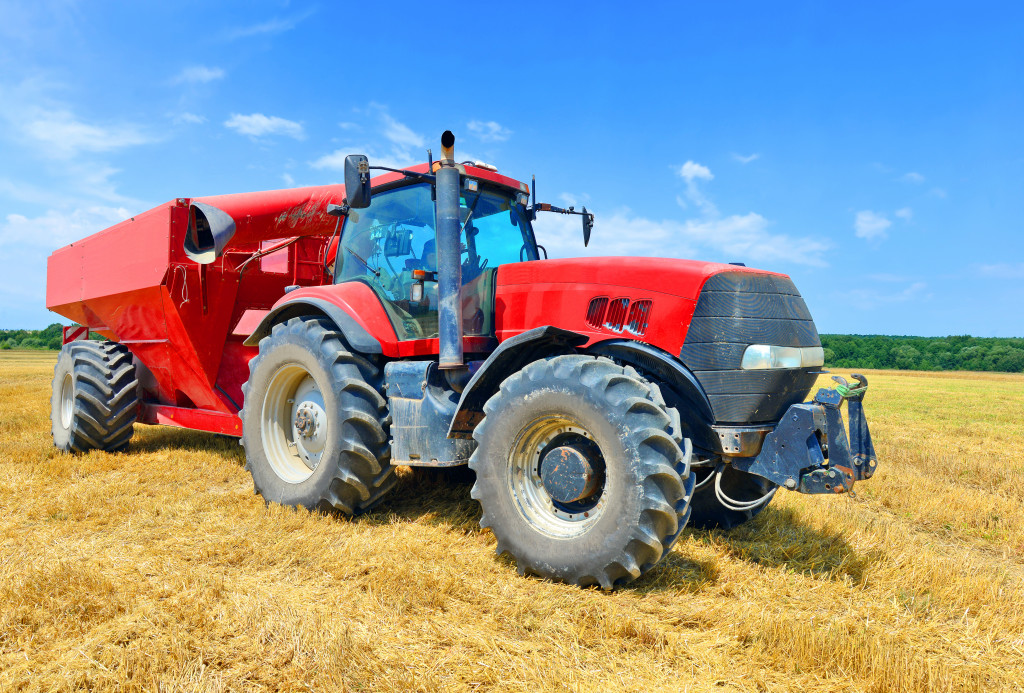Tractor pulling, also known as diesel truck pulling, has been a well-loved American motorsport for decades. Here are some interesting trivia and facts about the race that you may not know have heard about.
The sport came from humble beginnings.
One can argue that the sport started even before tractors were invented, as farmers during the Civil War held competitions to see which of their horses were fastest while pulling heavy farm implements. But it really all started in 1929 when farmers began fastening their field tractors to weighted sleds and speeding up the track to see who could pull it the farthest at the least amount of time. Eventually, event organizers heard the noise, and the happenings drew in curious spectators. When the 1950s came, country fairs across America started featuring tractor pulls as one of the main events. Time went on, and truck pulling grew in sophistication and became the beloved motorsport it is today.
Tractors have to be group into different classes.
To ensure a fair and competition, tractors have to be grouped into specific classes to meet different requirements. Here are the classes:
- Standard and vintage, which are natural and plain vintage tractors that need to have a minimum age of thirty years.
- Sport and supersport, which are tractors that are allowed light modifications to become a standard tractor. The supersport category requires non-standard fuel.
- Pro and super stock, which requires that the appearance of the tractors be maintained, with no internal improvements made. Pro-stocks are only allowed to mount one turbocharger.
- Free or modified class means that any combination of transmission and motors is allowed, with certain limits.
- Three-wheel drives or car pullers
Every class is further sub-divided into smaller sub-classes, which are dependent on the weight of the machine. But what makes the classes similar is that every equipment that participates in competitions must meet the strict environmental and safety requirements mandated by the head organizations of the sport.
Truck pulling enthusiasts need to make certain improvements in their homes.
Like any other sport, tractor pulling enthusiasts need to own the necessary tools, items, and equipment and make certain adjustments in their homes to make room for the sport they love. One of them is installing mobile column lifts to help store their trucks properly, especially if their garage space is limited. It’s also not the cheapest sport, as athletes need to have the necessary tools to maintain their trucks or tractors.

Athletes involved in this sport work hard to make their tractors look original and creative.
Competitors have a lot of freedom when it comes to the designs of their tractors. The limitations and requirements differ from organization to organization. Some tractors don’t even look like regular farm tractors anymore; they have become art forms in their own right—they really look like vehicles that participate in car racing. Drivers choose different colors to represent their companies, businesses, and sponsors. They also use decorative and sophisticated paint jobs, multiple kinds of engines, and discarded but still impressive military machinery. It’s a great way for racers to showcase everything that they stand for and the sponsors that have helped them get to the competition.
Spectators are allowed to participate.
Like horse race betting, spectators are allowed to participate in the sport in two ways: 1) They can choose to drive, or 2) bet on a specific tractor. It allows for tractor pulling enthusiasts to come together and be united by a single event because drivers are not the only ones who have a stake in it; the audience has to look forward to the results. It makes for a healthy competitive atmosphere, motivates drivers to do well, and gives spectators an incentive to cheer their hearts out. These events usually take place at fairs during the summer and early fall, adding fun and excitement to the warmer months. But there are winter events, too, like the Gordyville 2020.
There are four levels of competition.
The four levels are state level, grand national, regional level, and super national. The competitions are supervised and sanctioned by the NTPA (National Tractor Pullers Association), which was established in 1969. Representatives from eight states came together to establish a uniform set of rules and give motorsport an established structure.
Competition Diesel
Tractor pulling or diesel truck pulling is an interesting sport that doesn’t garner as much attention as its contemporary motorsports. But it is just as exciting and entertaining. The fact that it can bring a whole community together makes it even more special.

